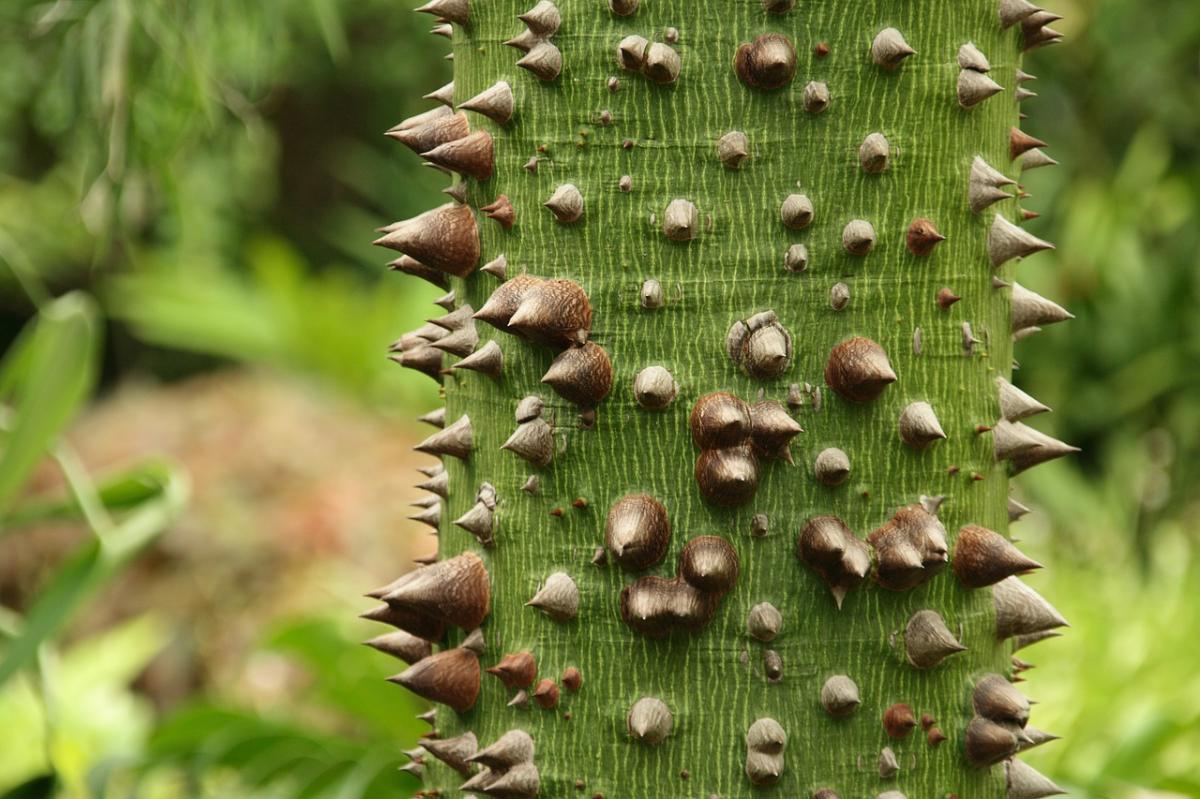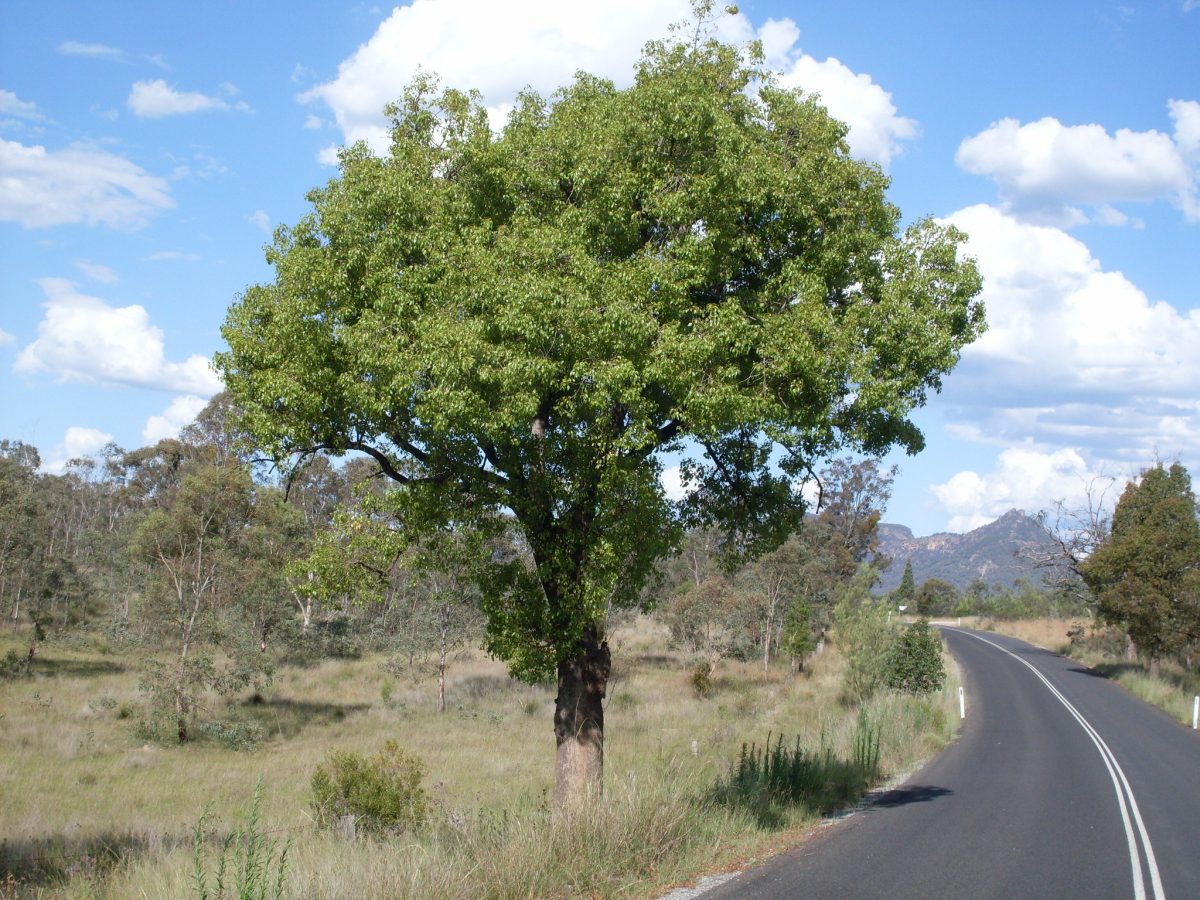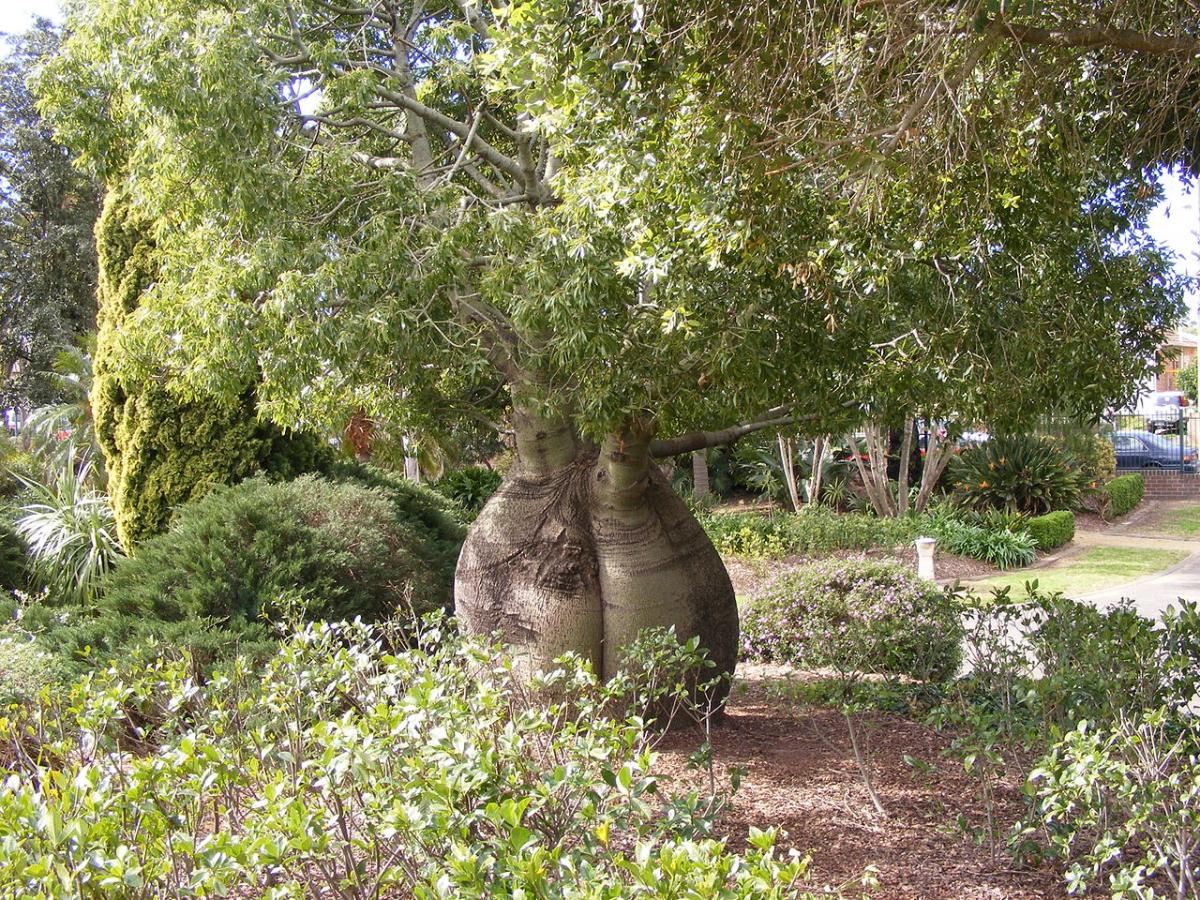
Bottle-shaped trees are plants that, in order to stand out, it is interesting that they are planted alone, surrounded by others of low size. In addition, it must be said that they resist drought very well; in fact, if they have a thick trunk it is precisely because they have evolved to use them as water storage. Thanks to this, they can go weeks without rehydrating.
Do you want to know their names? Some of them you may know, but others will surprise you instead. Similarly, they are all plants that, when conditions allow, they are beautiful in the garden.
Adansonia grandidieri

Image - Wikimedia / Bernard Gagnon
Is baobab from Madagascar, and the most popular of all of the genre. It is characterized by having a height of up to 30 meters, although specimens of 40 meters have been found. Its trunk reaches 3 meters in diameter, and has few ramifications. The leaves are composed of 6 to 9 bluish-green leaflets, and they fall in the dry season (or if grown in temperate climates, in autumn-winter). It blooms in spring-summer, producing white flowers.
If we talk about its cultivation, it is a very demanding plant: it needs light soil, which drains water quickly, and direct sun. Also keep in mind that you have to water it very little, only when the soil is completely dry. Can't stand cold at all, so you will need frost protection.
Brachychiton populneus

Image - Flickr / John Tann
Known as bottle tree, it is a species of evergreen or semi-evergreen tree native to Australia. Reaches a height of 10-12 metersIt has a smooth trunk that widens at its base. The leaves have variable shapes: they can be simple, or lobed. Its flowers are small, whitish on the outside and pink on the inside.
It has a rapid rate of growth, and can live without any problem in poor soils. It supports drought very well, as well as frosts down to -4ºC.
Brachychiton rupestris

Image - Wikimedia / Adam.JWC
I like to call it the Australian baobab, since its trunk is very similar. Its common name is actually Queensland bottle tree, and it is an evergreen tree that reaches 20 meters in height. Its trunk becomes very thick, up to 1 meter in diameter.
It grows in well-drained soils, whether or not they are rich in nutrition, and in places exposed to the sun. It can withstand up to -2ºC without being damaged.
ceiba insignis

Image - Wikimedia / Michel Chauvet
La ceiba insignis is a deciduous tree endemic to Bolivia and Peru that grows from 4 to 18 meters high. Its trunk widens at the base, and is heavily armed with thorns. The leaves are green, with 5-7 leaflets, and are deciduous. In spring it produces creamy-yellow flowers.
In cultivation it is a plant that needs to be in full sun, and in the ground more than in a pot, although during its youth it looks very beautiful in a container. It requires watering from time to time, always bearing in mind that it supports drought better than waterlogging. Supports up to -4ºC.
Ceiba speciosa / Chorisia speciosa
It is known as palo borracho or palo rosa, and it is a deciduous tree native to South America. Reaches a height of 10-25 meters, and its trunk widens in its lower third. This normally is protected by robust spines, although depending on the specimen and whether it is a hybrid or not, it is possible to find specimens with few or no spines. Its flowers are pink, with a high ornamental value.
Likes sunny exposures and sandy, well-drained soils. It grows apace, and withstands frosts down to -4ºC.
Pachypodium lamerei

Image - Wikimedia / H. Zell
El Pachypodium lamerei it is a succulent tree native to Madagascar. Reaches a height of 10 meters, although in cultivation it is rare that it exceeds 8 meters. Its trunk is covered by numerous sharp thorns, and its few branches have elongated, deciduous leaves. It produces white and very aromatic flowers.
Like the rest of the bottle-shaped trees, it requires a loose soil, with a good water drainage system. It can be grown in pots, with a substrate such as pomx or similar. As for its rusticity, it supports the cold well, but if there are frosts in your area you must protect it.
Pseudobombox ellipticum

Image - Wikimedia / Michel Chauvet
El Pseudobombox ellipticum It is a deciduous tree native to subtropical humid forests, from Mexico to Nicaragua. Reaches a height of up to 30 meters, although in cultivation it is difficult for it to exceed 10 meters. Its trunk is thick, measuring 1,5 meters in diameter, and lacks thorns. The leaves are large, webbed, so they give a lot of shade. In addition, it produces white flowers.
In tropical and subtropical climates it grows at a good rate; even in warm temperate climates such as the Mediterranean, it can do so at a rate of 80cm / year (I know this from my own experience) provided that it is watered regularly in summer. Withstands the cold, as well as occasional frosts of up to -2ºC.
Which of these bottle-shaped trees did you like the most?
